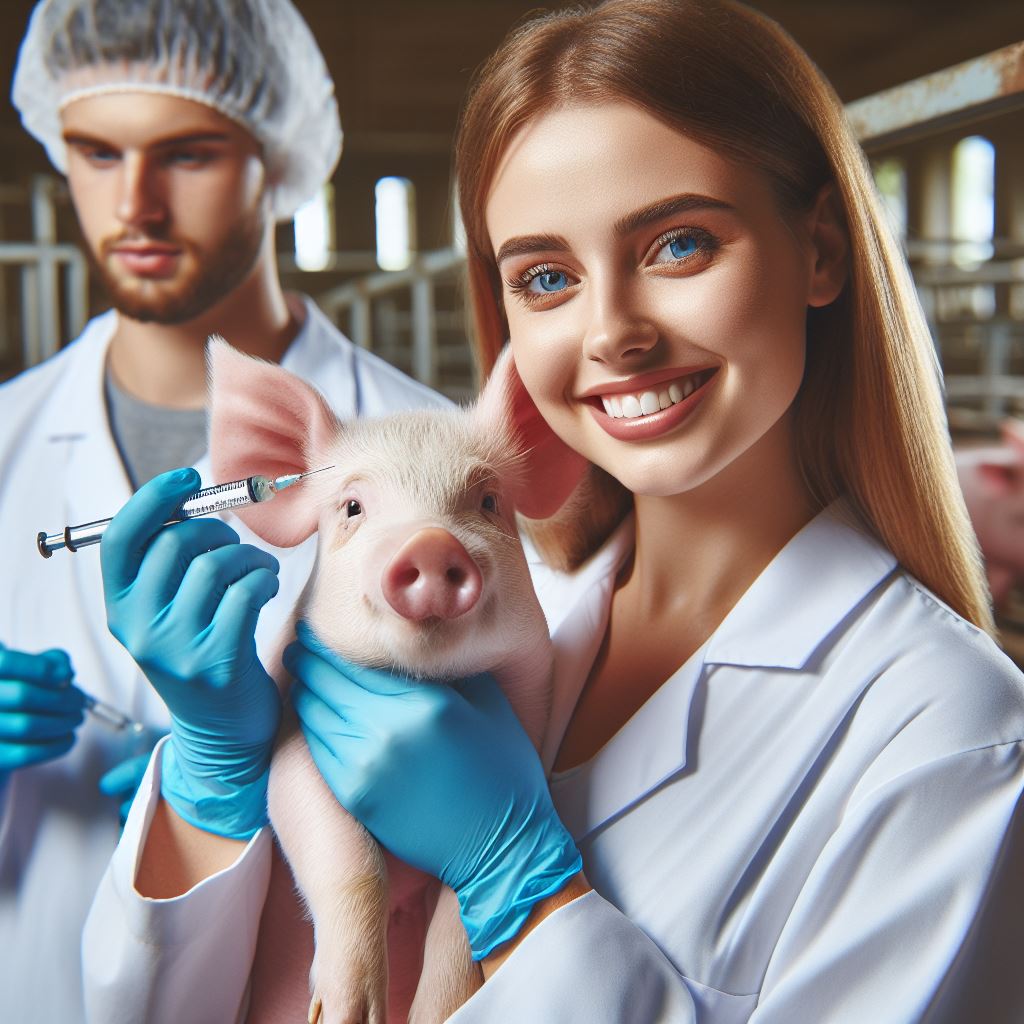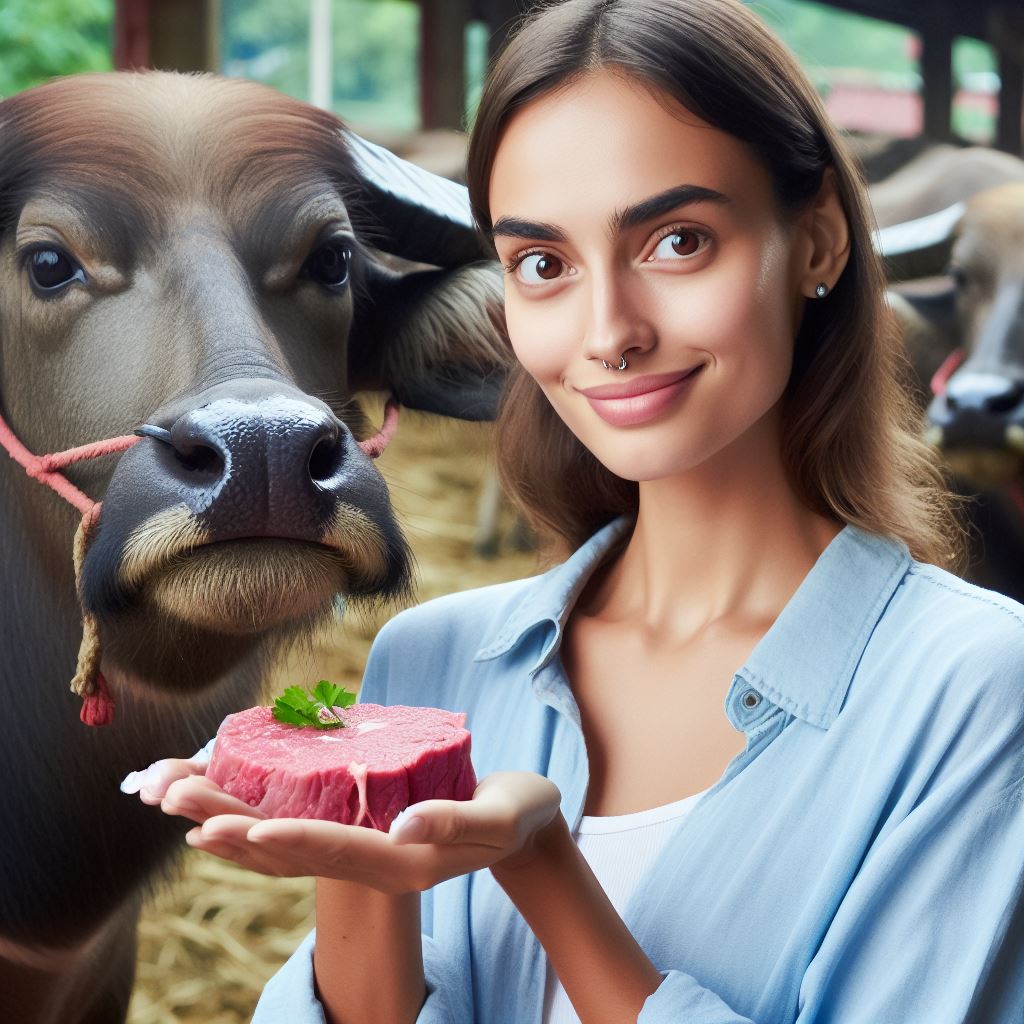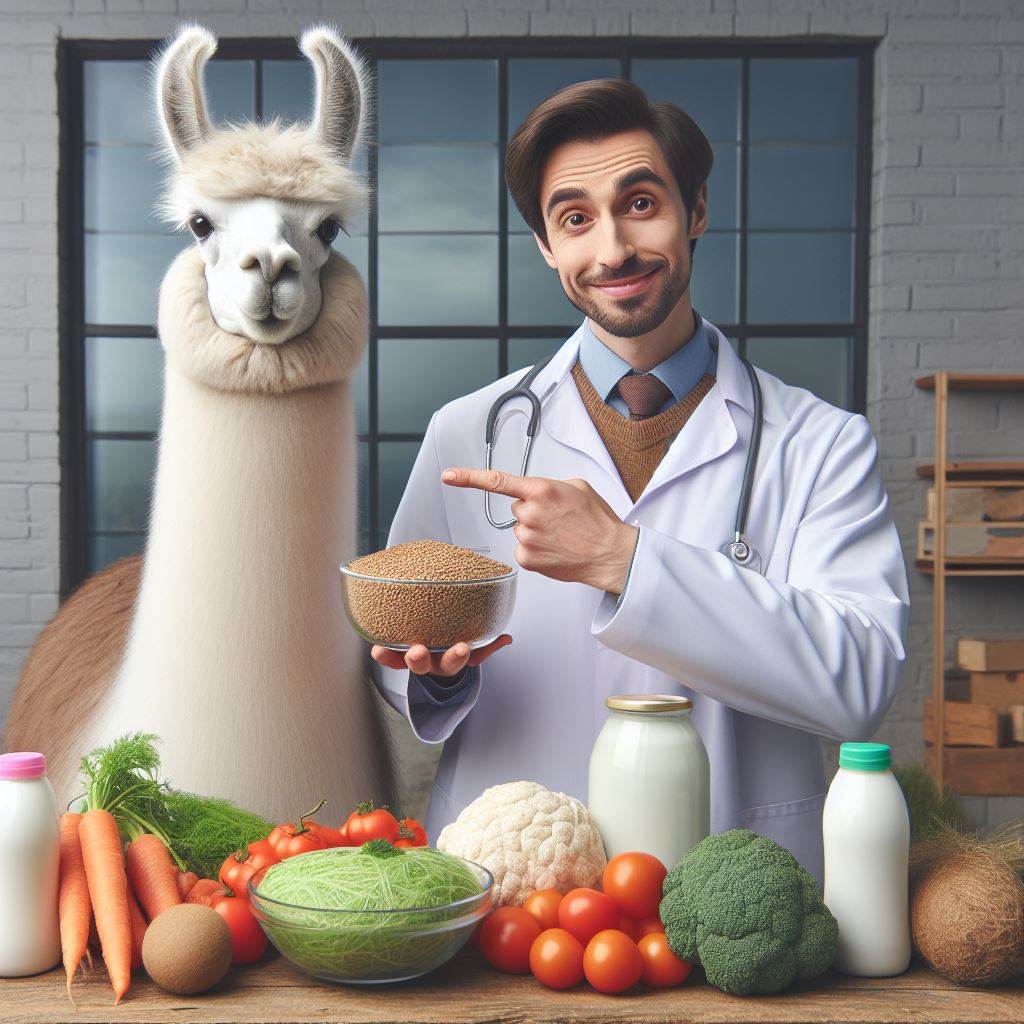Introduction
Let’s explore Sheep Breeding Best Genetic Practices.
Sheep breeding plays a crucial role in ensuring the quality and productivity of the sheep industry.
In this blog post, we will explore the importance of sheep breeding and the purpose of this article.
Introduction: Elevating Your Flock Through Sheep Breeding
Unlock the secrets to successful sheep breeding, a pivotal aspect of livestock management.
Optimal genetic practices ensure a healthy, robust, and thriving sheep population.
This comprehensive guide delves into the key principles, techniques, and benefits that form the foundation of sheep breeding excellence.
From selecting superior breeding stock to implementing effective mating strategies, discover how genetic advancements contribute to enhanced wool quality, meat production, and overall flock resilience.
Join us on a journey to elevate your sheep farming endeavors through the art and science of strategic genetic practices.
Understanding sheep genetics
Basics of genetics
Genes are responsible for traits passed down in sheep breeding.
Sheep can possess different traits, influenced by their genetic makeup.
In sheep breeding, understanding genetics is crucial for achieving desired outcomes.
Genes are the building blocks of traits that are passed down from generation to generation.
By comprehending the basics of genetics and their roles in sheep breeding, breeders can make informed decisions to improve their flocks.
Roles of genes in sheep breeding
Genes determine various physical characteristics of sheep.
Transform Your Agribusiness
Unlock your farm's potential with expert advice tailored to your needs. Get actionable steps that drive real results.
Get StartedFrom their size and color to their body structure and wool quality, genes play a vital role in defining these traits.
Breeders can select specific genes to emphasize desirable traits and enhance the overall appearance of their sheep.
In addition to physical characteristics, the influence of genes extends to the health and disease resistance of sheep.
Certain genes can confer resistance to common diseases, ensuring healthier and more robust animals.
Breeders can focus on breeding sheep with strong genetic foundations for disease resilience, leading to lower mortality rates and reduced veterinary expenses.
Productivity and performance are other crucial aspects influenced by genes in sheep breeding.
Genes can determine the milk production potential of ewes or the growth rate of lambs.
By selecting animals with genotypes favoring high productivity and performance, breeders can enhance the overall profitability of their flocks.
Genetic variations in sheep breeds
When considering genetics in sheep breeding, there are two main types of sheep: purebred and crossbreeds.
Purebred sheep are bred within a specific genetic lineage, maintaining the desired breed traits.
This breeding approach helps preserve and improve specific characteristics that define a breed.
On the other hand, crossbreeding involves introducing genetic diversity by mating different breeds.
Crossbred sheep inherit a combination of traits from their parent breeds, often resulting in increased vigor, adaptability, and improved production traits.
Breeders can strategically use crossbreeding to capitalize on the strengths of different breeds and achieve specific breeding goals.
Maintaining genetic diversity is crucial in sheep breeding.
Inbreeding depression is a potential risk when closely related animals are bred together, resulting in reduced fertility, growth rates, and overall vigor.
By regularly introducing genetics from unrelated or diverse breeds, breeders can prevent inbreeding depression and maintain a healthy and robust flock.
In general, understanding sheep genetics is essential for successful breeding practices.
Genes dictate physical characteristics, disease resistance, productivity, and performance in sheep.
Breeders can utilize this knowledge to make informed decisions about breeding strategies, including purebred or crossbreeding, to optimize traits and maintain genetic diversity.
By prioritizing genetics in breeding programs, breeders can ensure the continual improvement and resilience of their sheep flocks.
Read: Beef Cattle Nutrition: What Works Best?
Selecting breeding stock
When it comes to sheep breeding, selecting the right breeding stock is crucial for achieving desired genetic traits and maintaining a profitable operation.
This section will focus on the key factors to consider during the selection process.
Showcase Your Farming Business
Publish your professional farming services profile on our blog for a one-time fee of $200 and reach a dedicated audience of farmers and agribusiness owners.
Publish Your ProfileSetting breeding goals
Before selecting breeding stock, it is important to establish clear breeding goals.
These goals should align with the specific breeding objectives you want to achieve.
Whether you aim to improve wool quality, enhance meat production, or enhance overall breed characteristics, defining your objectives is essential for progress.
Sustainable and profitable breeding targets should also be set.
Consider factors such as market demand, cost of production, and potential returns on investment.
It is important to strike a balance between a sustainable breeding program and profitability.
Evaluating conformation and structure
Physical traits play a significant role in improving the breed’s overall quality.
Evaluate potential breeding stock for traits such as body conformation, size, muscle development, and overall appearance.
Select animals that possess desirable traits that contribute to the breed’s improvement.
Structural soundness and mobility are also important considerations.
Assess the animal’s skeletal structure, leg quality, and overall mobility.
Sheep with good structural integrity are less prone to injury and can perform better in various environments.
Assessing production traits
Production traits, such as fertility and reproduction, are crucial for a successful breeding program.
Evaluate the potential breeding stock for their reproductive capabilities, including conception rates, lambing ease, and maternal instincts.
Choose animals that exhibit desirable reproductive traits.
Growth rate and meat quality are also important factors to consider.
Select animals that have exhibited desirable growth rates throughout their development.
Additionally, evaluate the meat quality traits such as marbling, tenderness, and flavor.
Breeding stock with superior growth and meat quality characteristics will contribute to the success of the operation.
Therefore, selecting breeding stock is a critical step in sheep breeding.
By setting clear breeding goals, evaluating conformation and structure, and assessing production traits, breeders can ensure the establishment of a successful and genetically improved flock.
Read: Innovations in Dairy Cattle Management

Strategies for genetic improvement
In sheep breeding, genetic improvement plays a crucial role in ensuring the production of high-quality and healthy sheep.
Various strategies can be employed to achieve this goal.
This section will discuss the strategies for genetic improvement in sheep breeding.
Inbreeding vs. outbreeding
Pros and cons of inbreeding
Inbreeding is the mating of individuals that are closely related.
This breeding practice has both advantages and disadvantages.
One of the main benefits of inbreeding is the preservation and fixation of desired traits.
By mating closely related individuals, the chances of these traits being passed on to the next generation are increased.
Inbreeding also allows breeders to have greater control over the genetic makeup of their flock.
However, inbreeding also comes with various risks.
One major disadvantage is the increase in the expression of deleterious recessive traits.
When two related individuals mate, the chances of these recessive genes coming together and being expressed in the offspring are higher.
This can lead to reduced fertility, increased susceptibility to diseases, and other health issues.
Benefits of outcrossing
Outcrossing, on the other hand, is the mating of individuals that are not closely related.
This strategy introduces new genetic material into the flock and can help in reducing the expression of deleterious recessive traits.
By outcrossing, breeders can increase the genetic diversity of their flock, leading to improved overall health and vigor.
Outbreeding also has its advantages.
It can enhance certain traits such as growth rate, milk production, and disease resistance.
Moreover, outcrossing helps in preventing inbreeding depression, which is a decline in the overall fitness and performance of the flock due to excessive inbreeding.
Showcase Your Farming Business
Publish your professional farming services profile on our blog for a one-time fee of $200 and reach a dedicated audience of farmers and agribusiness owners.
Publish Your ProfileUtilizing performance records
Importance of data collection
Collecting performance records is crucial in making informed breeding decisions.
By monitoring and recording various traits such as weight gain, wool quality, and reproduction rates, breeders can assess the performance of individual sheep and their genetic potential.
This data provides valuable insights into the heritability of certain traits and helps in selecting superior breeding stock.
Genetic evaluations and breeding values
Genetic evaluations involve the analysis of performance records and pedigree information to estimate the genetic merit of animals.
Breeding values, derived from these evaluations, indicate an animal’s potential to pass on desirable traits to its offspring.
Utilizing breeding values enables breeders to make more accurate and effective selection decisions, leading to genetic improvement over generations.
Artificial insemination and embryo transfer
Advantages of assisted reproductive technologies
Artificial insemination (AI) and embryo transfer (ET) are assisted reproductive technologies that provide several benefits in sheep breeding.
AI allows breeders to utilize genetic material from superior sires without physically bringing them to the flock.
This widens the gene pool and enables access to high-quality genetics.
ET, on the other hand, allows breeders to produce multiple offspring from a single genetically valuable ewe, optimizing the spread of desirable traits.
Genetic selection through AI and ET
AI and ET further enhance genetic selection by facilitating the breeding of specific individuals with known superior genetic traits.
With AI, breeders can select sires with excellent genetics and introduce them into the flock without the need for physical proximity.
Furthermore, ET allows breeders to multiply the offspring from valuable ewes, enhancing the overall genetic potential of the flock.
These technologies contribute significantly to genetic improvement in sheep breeding.
Generally, breeding sheep with superior genetic traits requires careful consideration and implementation of various strategies.
The choices between inbreeding and outbreeding, utilization of performance records, and the use of assisted reproductive technologies all play vital roles in achieving genetic improvement.
By adopting these strategies, breeders can create healthier and more productive flocks, ensuring the overall success of their sheep breeding endeavors.
Read: Managing Cattle: Disease Prevention Tips
Breeding management and techniques
Controlled mating systems
- Enhanced Genetic Traits: Controlled breeding allows for the selection of desired genetic traits, improving flock characteristics.
- Optimal Lambing Seasons: Synchronization ensures lambs are born during favorable seasons, optimizing survival rates and resource availability.
- Efficient Resource Utilization: Controlled breeding leads to synchronized lambing, streamlining resource allocation and management for improved efficiency.
- Ram Effect: Introducing a ram stimulates ewes’ reproductive cycles, resulting in synchronized breeding and more uniform lambing.
- Reduced Labor Intensity: Controlled breeding reduces the need for constant monitoring during lambing, easing labor demands on shepherds.
- Improved Lamb Quality: Synchronization contributes to uniform lamb growth and development, enhancing overall lamb quality and market value.
Embrace controlled breeding and leverage the RAM effect to propel your sheep farming into new heights of success.
Estrus detection and synchronization
Master the art of estrus detection, a crucial skill in optimizing sheep breeding.
Employ advanced techniques for accurately identifying estrus cycles, ensuring precise timing for mating.
Dive into synchronization programs, powerful tools that harmonize breeding seasons across the flock.
Explore how synchronization enhances efficiency, leading to a more synchronized lambing season.
Uncover the secrets of successful breeding through strategic synchronization, providing a roadmap for achieving optimal reproductive outcomes.
Elevate your sheep breeding expertise with these cutting-edge techniques, driving the genetic progress of your flock.
Genetic testing and DNA profiling
- Beneficial Genetic Markers: Harness the power of genetic markers for traits like increased wool quality and resistance.
- Detecting Inherited Diseases: Employ advanced techniques to identify and mitigate inherited diseases, ensuring flock health.
- Trait Detection: Uncover genetic traits that contribute to robustness, fertility, and overall flock well-being.
- Innovative Technologies: Explore cutting-edge technologies for precise identification of genetic markers, propelling your breeding practices forward.
Unveil the secrets of genetic practices in sheep breeding, where strategic identification and management lead to healthier, thriving flocks.
Read: Deer Farming: Genetics for Superior Antlers
Conclusion
This section has highlighted the best genetic practices for sheep breeding.
We have discussed important factors such as selective breeding, proper record-keeping, and genetic diversity.
These key points serve as a reminder for farmers to prioritize genetic practices to ensure the improvement of their flock.
Furthermore, we encourage farmers to continuously educate themselves on the latest advancements in sheep breeding.
The field is ever-evolving, and it is crucial to adapt breeding practices accordingly to increase productivity and overall flock health.
By implementing the best genetic practices discussed in this section, farmers can improve the quality of their sheep and breed healthier, more resilient animals.
Continual learning and adaptation are the keys to success in the ever-changing world of sheep breeding.




